Michelle Manson: The Beauty of the Channel Islands
For many divers, the first thing you hear when you mention that you are a California diver is “Oh, that’s too cold!” California waters are cooler than your average dive location, but the payoff for that colder water is marine life that is continually changing through the seasons. The world-famous Channel Islands off the coast are a great example of this varied and varying environment.
There are 8 Channel Islands spread up and down the coast of California from the Northernmost island, San Miguel, off the coast of Santa Barbara, continuing down to San Clemente Island which is located between Los Angeles and San Diego. They are broadly grouped as the “Northern” and “Southern” Channel Islands, and the marine life and topography around each are very different. The Southern islands are known for their blue water and beautiful kelp forests with sunbeams shimmering through the canopies and the Northern isles for their raw underwater scenes and hectic conditions. You’re never bored diving in California, with life covering the rock reefs and hiding in the kelp stalks that tower over the ocean bottom.
Whether you are a wide angle or macro photographer, the Islands have plenty of both to keep you interested. San Miguel Island, the holy grail of the islands, offers amazing kelp forests and pinnacles that have currents with nutrient-rich water making the marine life abundant and thick. If you love sea puppies, those adorable sea lions and harbor seals, along with blue water with dense kelp forests, then Santa Barbara Island is the destination for you. Oh, and let’s not forget the giant black sea bass which you can find at Catalina Island.
Ask any Californian diver for their favorite location, and most will adamantly say California! Typically they will then regale you, listing their best dives and the stories that go along with them. When you dive in your first thick kelp forest and can pause for a moment and take it all in, you will wonder why you waited so long.
To see more of Michelle’s work, visit her @mansonfotos feed on Instagram and her MansonFotos website.
_sitting_on_its_eggs__large.jpg)
Spanish shawl (Flabellina iodinea) sitting on its eggs
_in_the_shallows__large.jpg)
Garibaldi damselfish (Hypsypops rubicundus) in the shallows.
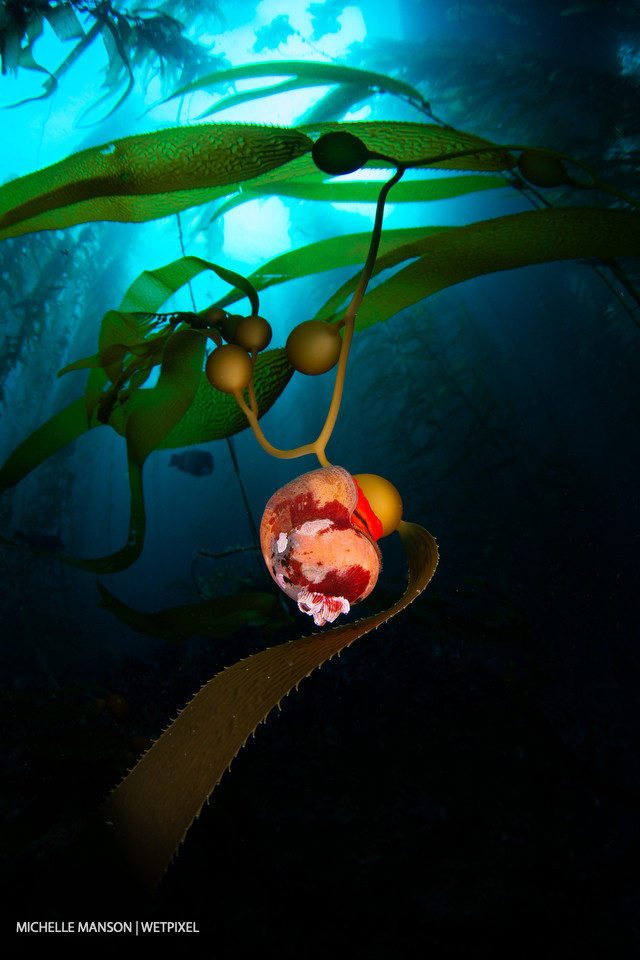
Norris top snail attached to a kelp ball.
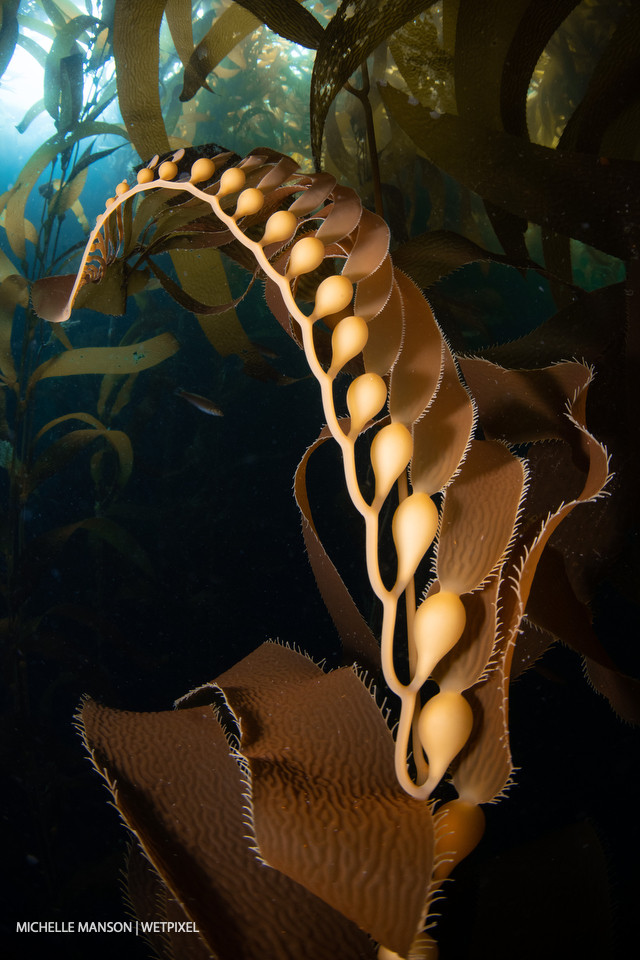
Perfect kelp strand.
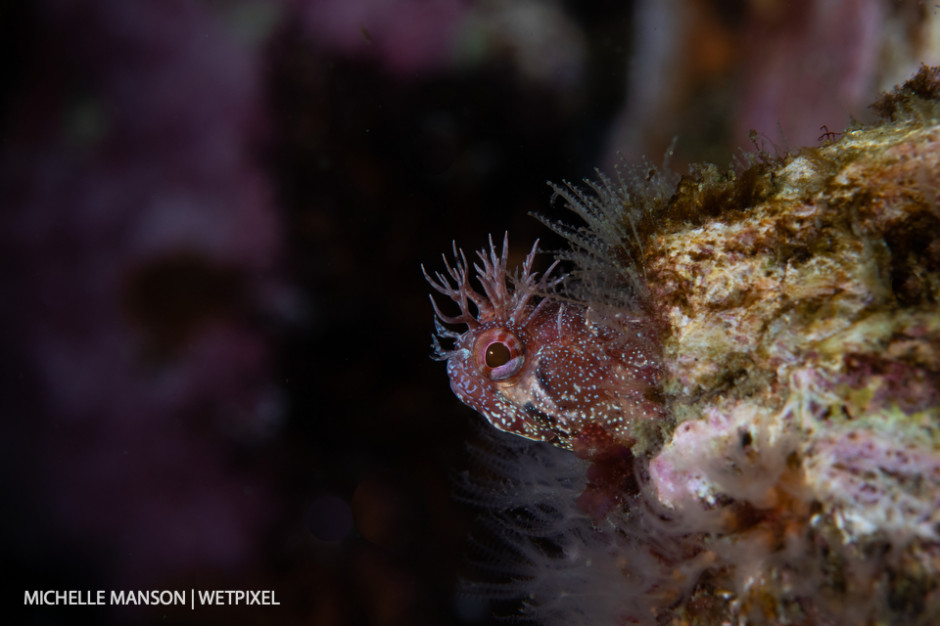
Fringehead blenny in abandoned barnacle shell.
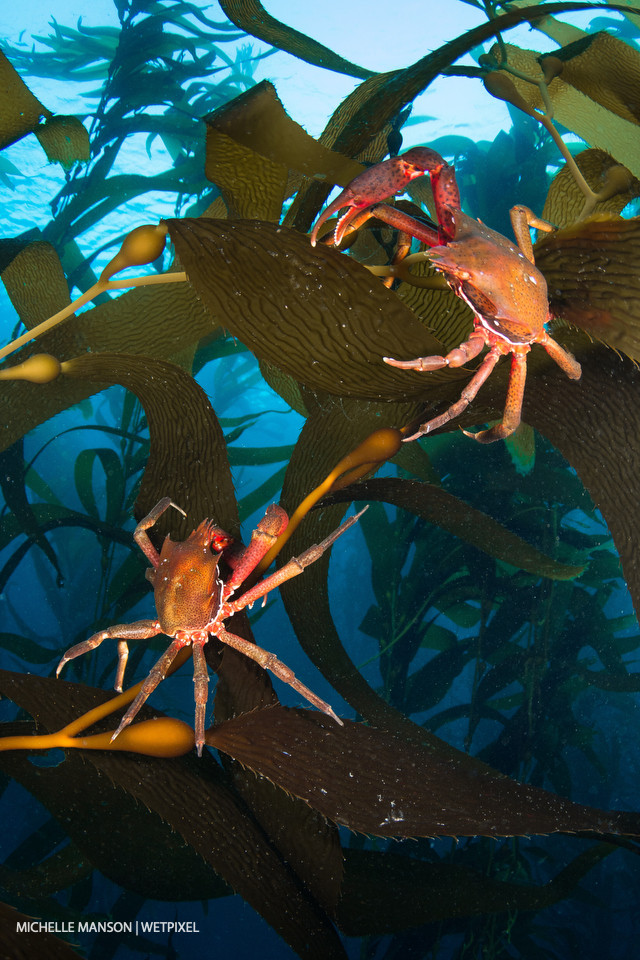
Two kelp crabs fighting in the kelp.
_curled_on_a_twig__large.jpg)
Spanish shawl (Flabellinopsis iodinea) curled on a twig.
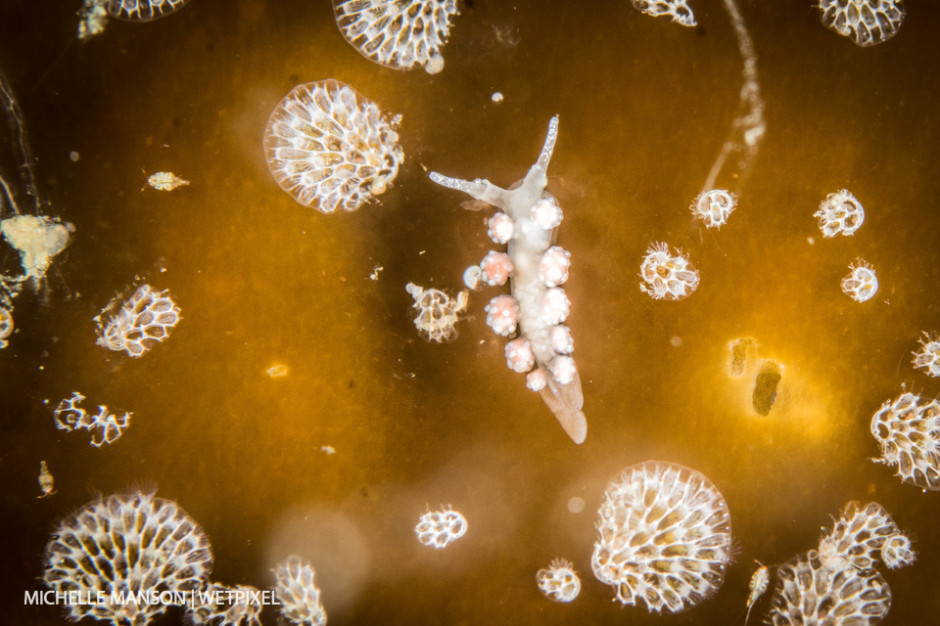
Tiny Doto amyra blending with bryozoa on kelp leaf.
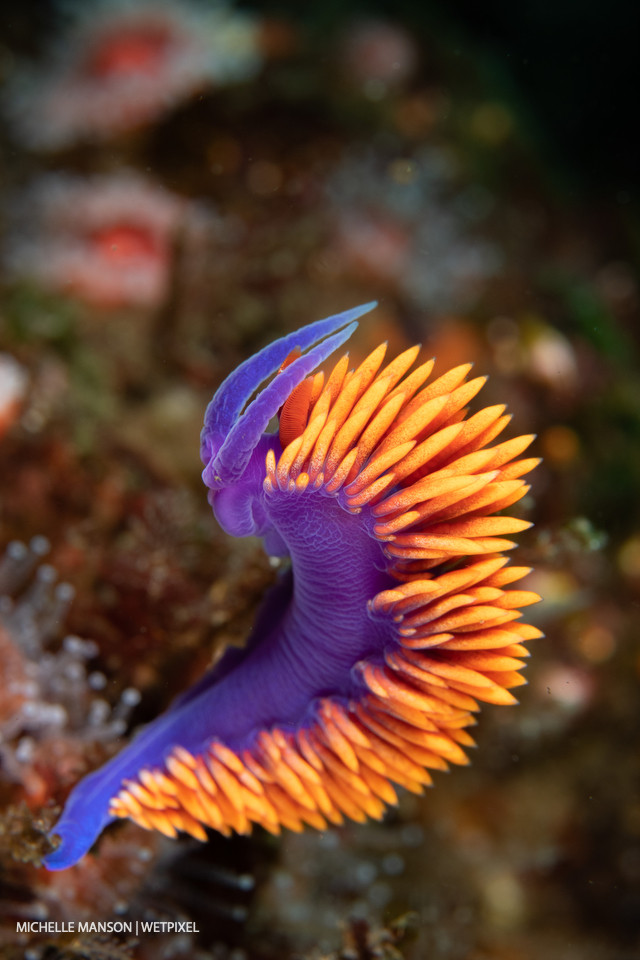
Spanish shawl (Flabellina iodineas) cerata looking like flames.
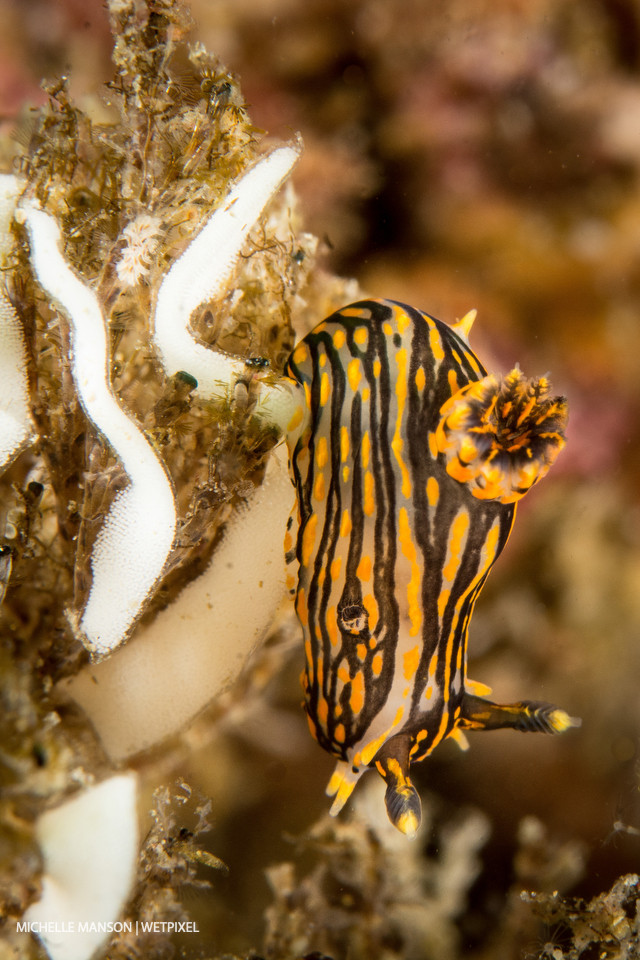
Polycera atra laying eggs.
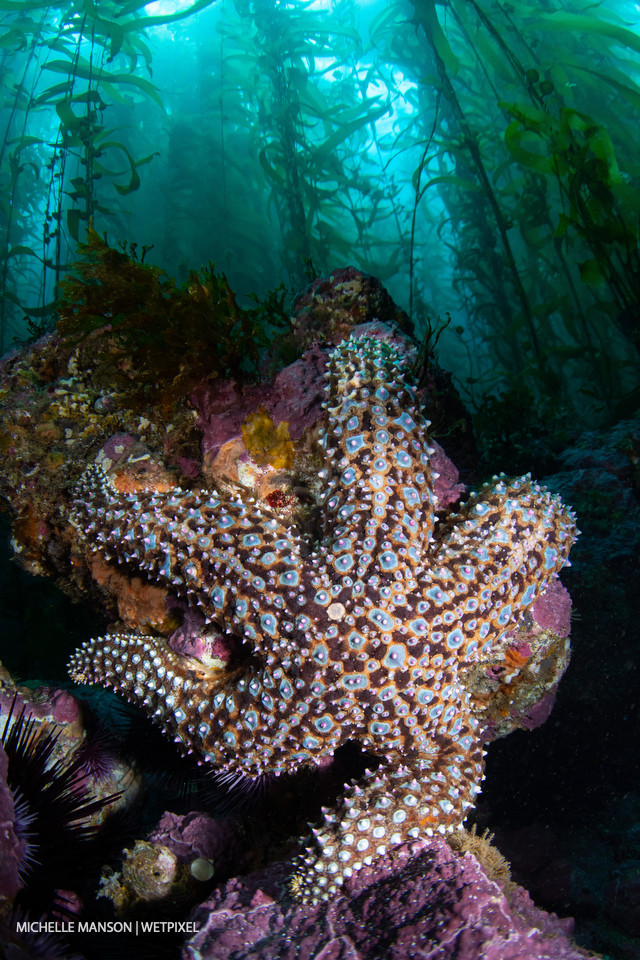
Ochre sea star in kelp forest.
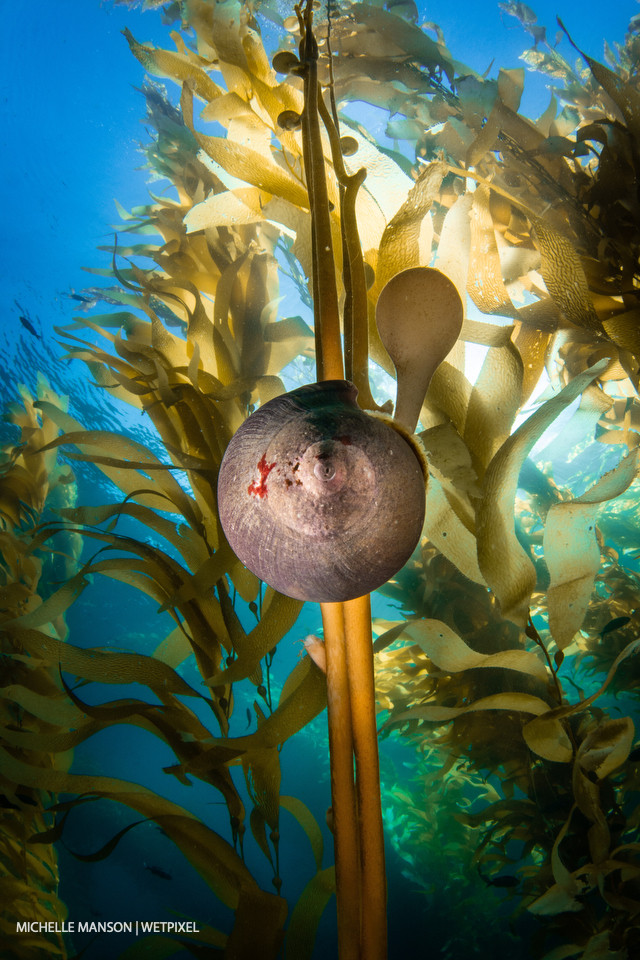
Norris top snail in the kelp shallows.
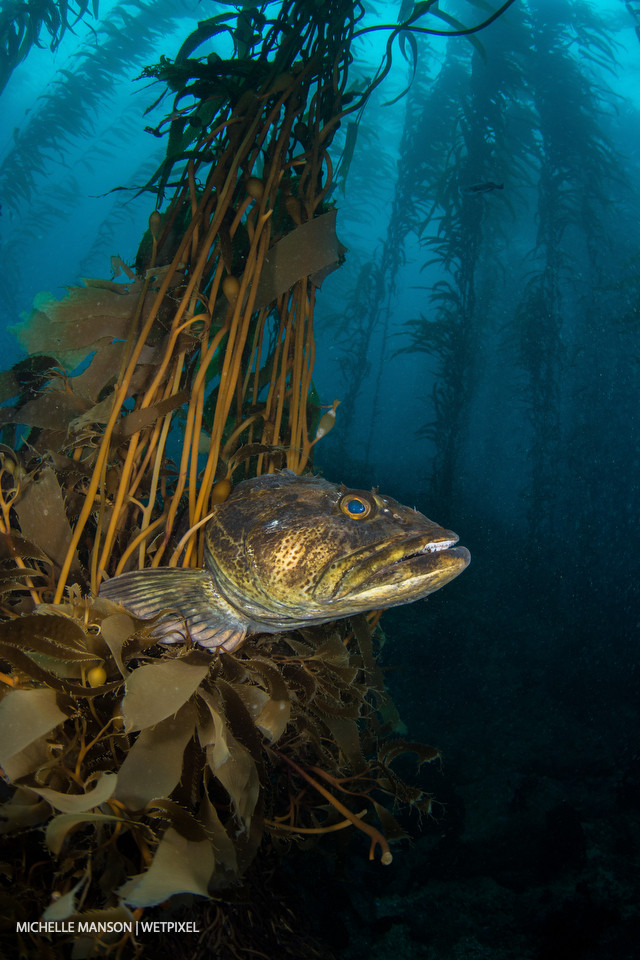
Lingcod poking its head out of a kelp skirt.
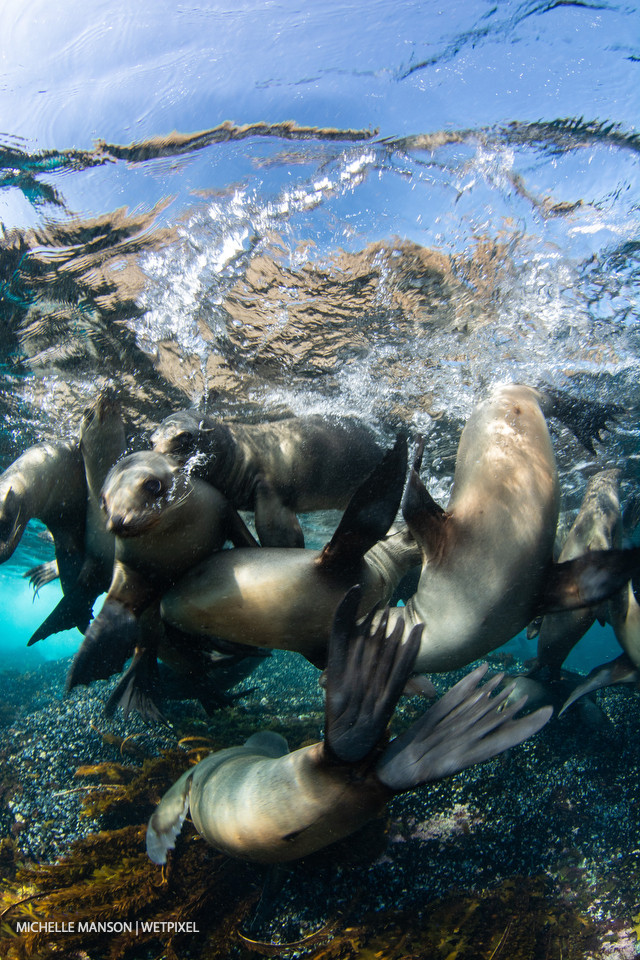
Juvenile sea lions playing in the shallows.
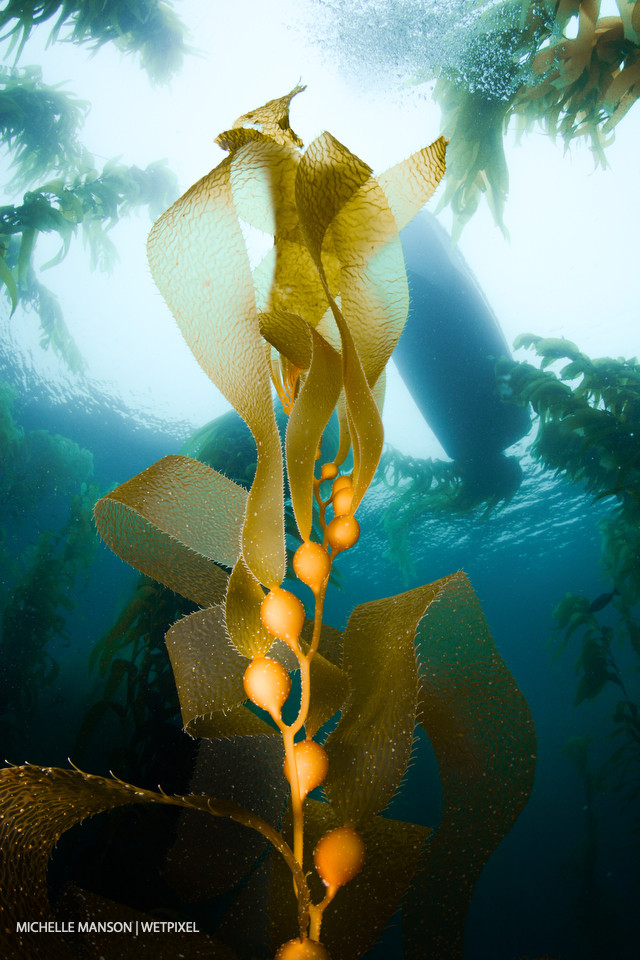
Kelp strand in blue water.
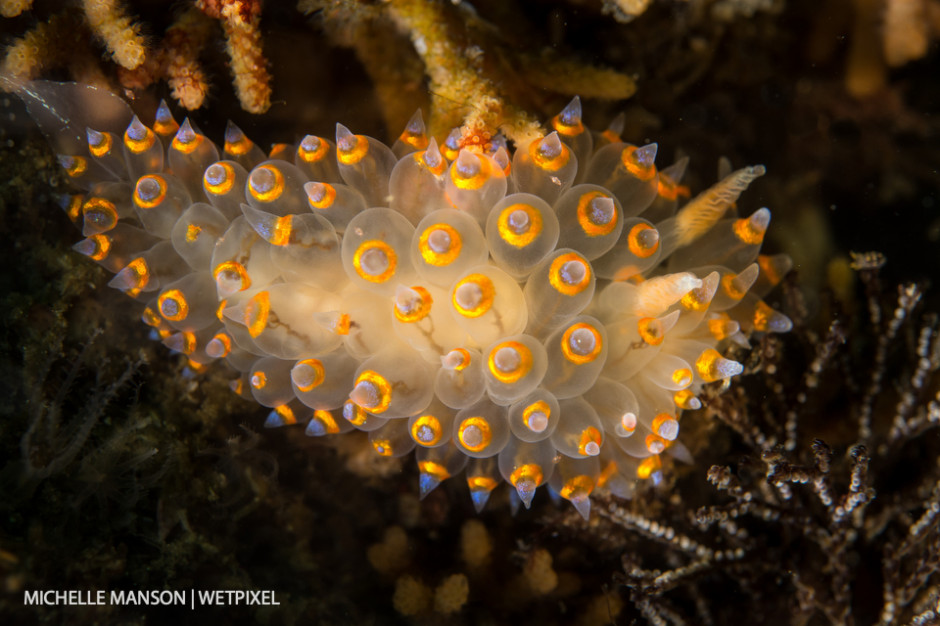
Janolus barbarensis cruising the reef.
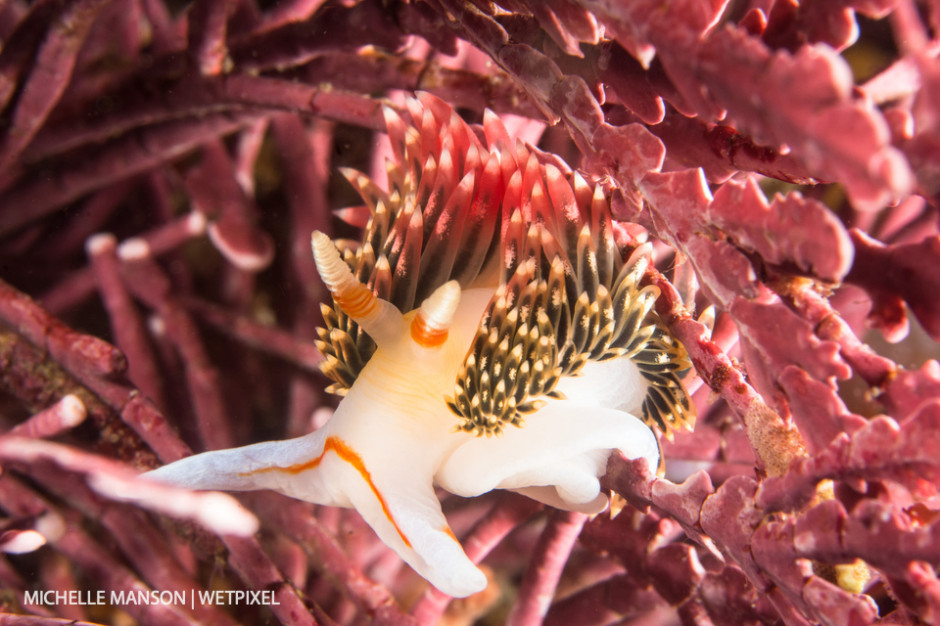
Hiltons aeolid nudibranch moving through coralline algae.
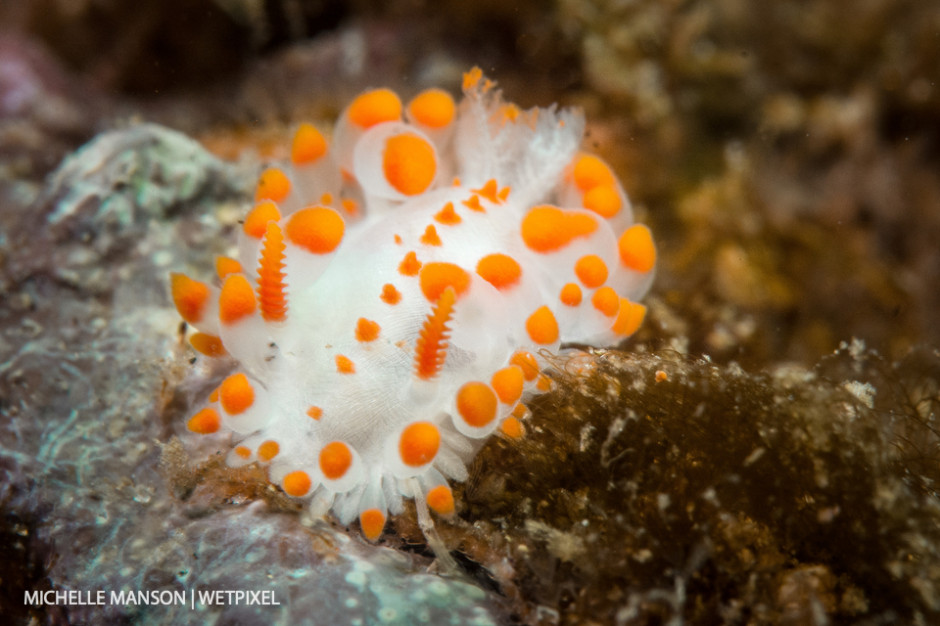
Cockerells dorid cruising the reef.
_crawling_up_a_kelp_stalk__large.jpg)
California spiny lobster (Panulirus interruptus) crawling up a kelp stalk.
_looking_for_its_next_nudibranch_meal__large.jpg)
California aglaja (Navanax inermis) looking for its next nudibranch meal.